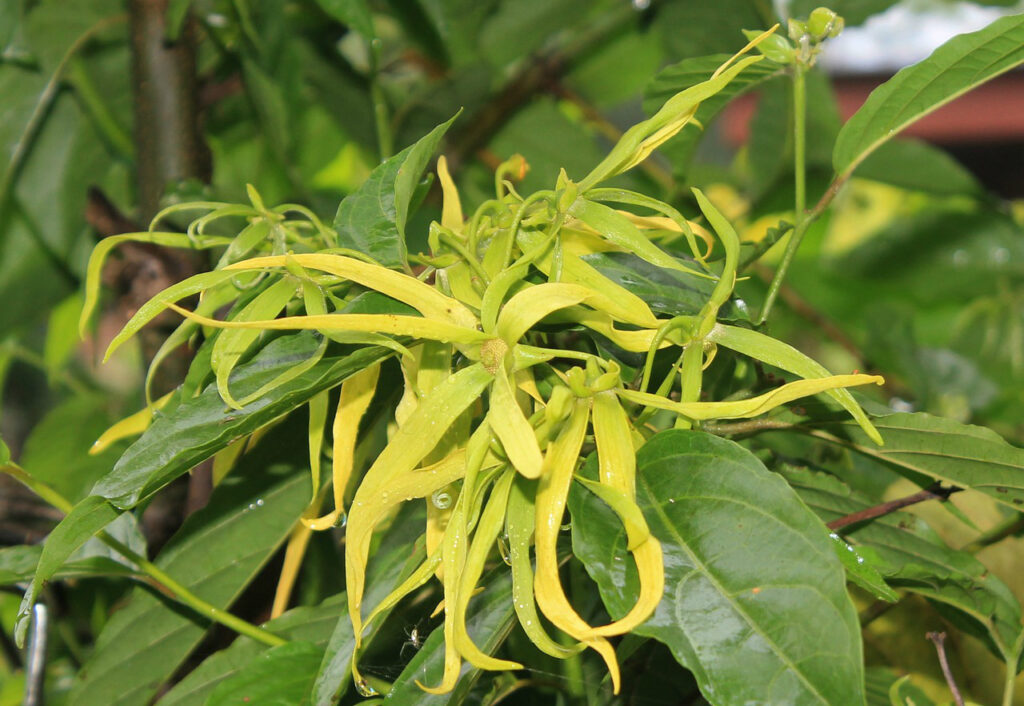How to Clean Patio Furniture Mesh + 3 DIY Cleaning Recipes
Maintaining the appearance and durability of your patio furniture mesh is a straightforward task that preserves your outdoor space’s functionality and aesthetics.
- What Kind of Mesh Are You Working With?
- 3 DIY Cleaning Recipes for Outdoor Mesh
- Drying and Maintenance
- Additional Care Tips
- Patio Mesh Cleaning: FAQs
- What is the best method to remove mold and mildew from outdoor mesh furniture?
- Can baking soda be used to effectively clean mesh patio chairs, and if so, how?
- What steps should be taken to clean plastic mesh on outdoor furniture?
- Is white vinegar a good choice for cleaning mesh on patio furniture, and what's the process?
- How can you get rid of stains on mesh patio furniture without damaging the material?
- What are some safe cleaning solutions for mesh material on outdoor furniture?
We know what a difference it makes when spending time on our deck when it’s clean vs. when it’s not. Clean patio furniture and overall cleanliness enhance the experience for cookouts and get-togethers with family.
Patio Furniture Cleaning Quick Tips
Over time, elements such as dirt, pollen, and mildew can dull the brightness and weaken the fibers of your furniture mesh.
- Regular cleaning not only revitalizes the look of your patio pieces but also extends their lifespan. Patio furniture is an investment; clean it accordingly.
- When cleaning the mesh on your patio furniture, it’s vital to select the right method to avoid damaging it. More on that later.
- Gentle DIY solutions made from household items such as water, vinegar, or mild dish soap are effective and eco-friendly options. We don’t like using harsh chemicals for simple cleaning tasks.
- Natural cleansers help you tackle various stains and build-up without leaving harmful residues or degrading the mesh material.
- Before cleaning, remove any loose debris with a soft brush or a handheld vacuum.
- The pre-cleaning step prevents dirt from embedding further into the mesh when applying your cleaning solution.
- For a deeper clean, the combination of warm water with a natural agent like vinegar can break down stubborn stains, leaving your mesh furniture fresh and ready for your next outdoor gathering.
Now, we’ll dive a lot deeper below. But cleaning patio furniture mesh can be a super simple process. We just advise you to take some basic precautions to avoid damaging the mesh and avoid chemical cleaners whenever possible.
What Kind of Mesh Are You Working With?
Identifying the type of mesh material you have is crucial for applying the proper care techniques that will prolong the life of your patio furniture.
Types of Mesh Materials
Mesh fabric makes up many outdoor furnishings, and it’s important to recognize the specific type you’re dealing with.
Common materials:
- Plastic mesh: Often found in more affordable outdoor patio furniture, plastic mesh is durable and resistant to the wear of outdoor elements.
- Metal mesh: Typically made from stainless steel or aluminum, metal mesh offers a sturdy option that can tolerate direct sunlight and humid climates but requires specific methods of upkeep.
- Outdoor sling fabric: This category includes high-performance materials like Sunbrella fabrics, which are renowned for their fade-resistant qualities and ability to withstand harsh elements.
- Polyester fabric: Ideal for outdoor space, polyester mesh is an all-around fabric that balances durability with comfort and can be treated for additional water and UV resistance.
Evaluating Outdoor Elements
Consider your outdoor space conditions when determining how to maintain the mesh material of your furniture.
- We like to consider things like how close our furniture is to nearby vegetation (trees, bushes, flowers, and more). Also, we’ve actually had mildew grown on outdoor furniture that’s regularly in the shade.
- In addition to that, we factor in how close everything is when we’re mowing. The more dirt and material that collects on your furniture, the harder it will be to clean over time if you’re not keeping it free from yard debris.
- If your outdoor furnishings are exposed to direct sunlight most of the day, or if you live in a particularly humid climate, you’ll need to clean and protect them accordingly to prevent damage and extend their usability.
Natural cleaning solutions, such as diluted vinegar or baking soda, can be gentle yet effective options to keep your mesh looking its best.
3 DIY Cleaning Recipes for Outdoor Mesh
These three DIY cleaning solutions are effective, easy to make, and use common household ingredients.
1.) Dish Soap and Water:
- Mix 2 tablespoons of mild dish soap with 1 gallon of warm water.
- Use a soft-bristle brush, dip into the solution, and scrub the mesh gently.
- Rinse thoroughly with clean water to prevent soap residue.
Tip: We like to wet down the furniture first since it makes the scrubbing easier.
2.) Vinegar and Baking Soda Mixture:
| Ingredients | Amount |
|---|---|
| White vinegar | 1/2 cup |
| Baking soda | 1/4 cup |
| Warm water | 1/2 gallon (x2) |
Optional: Add a few drops of essential oils or lemon juice for fragrance.
Mixing and Usage Steps:
- Mix the vinegar and water to make a simple cleaning solution.
- Spray the vinegar and water solution on areas that need to be cleaned.
- Apply additional solution with a soft brush in circular motions to clean soiled and dirty areas.
- Mix 1/4 cup of baking soda with 1/2 gallon of water and spray down the furniture to neutralize the acidic vinegar cleaning solution. Allow it to remain on the furniture for 5 minutes.
- Rinse down the fabric with water and allow it to air dry.
Note: Some DIYs recommend mixing the vinegar and baking soda in the gallon of water first. They’ll often reference the fizzing reaction when you mix them. However, the fizzing reaction only tells you one thing: you’ve just neutralized your cleaning solution so that it’s no more effective than using water.
Instead, use vinegar and water first, clean your furniture, then neutralize that with the baking soda and water mix after cleaning. Once finished, rinse. With this method, you’ll actually leverage the cleaning power of the vinegar instead of neutralizing it, as in most DIYs found online.
3.) Oxygen Bleach for Stubborn Stains:
Important: Test a small area first to ensure colorfastness.
- Combine 1 cup of oxygen bleach with 1 gallon of warm water.
- Stir until the bleach is fully dissolved.
- Sponge onto the affected areas and let it sit for 5-10 minutes.
- Scrub with a soft brush, then rinse off the solution completely.
Note: For darker-colored fabrics, we recommend using only 1/2 of oxygen bleach or even just 1/4 cup for an extra gentle solution. In most cases, your fabric won’t be all that dirty, so we recommend using weaker cleaning solutions instead of more concentrated ones.
Remember to always perform a spot test with these solutions on an inconspicuous area of your furniture before applying them to larger sections.
After cleaning, let the furniture air dry in a well-ventilated area. Regular maintenance using these simple DIY recipes can prolong the life and look of your mesh patio furniture.
Special Instructions for Different Materials
Different materials may require unique care:
- Wooden frames: Use a mild water and oil-based soap solution, avoiding the mesh when possible. Rub down with oil when finished.
- Resin and plastic furniture: A baking soda and water paste can tackle heavy grime without harming the surfaces.
- Stainless steel: Employ a specialized cleaner to prevent rusting and maintain its sheen. Baking soda and water can safely be used on stainless steel.
Always follow manufacturer recommendations and test any cleaner in a hidden area first to ensure it won’t damage the material.
Drying and Maintenance
Once your patio furniture mesh is clean, thorough drying and continued maintenance are essential for keeping your outdoor pieces in good condition without mildew growth.
Proper care prolongs the life of your furniture and ensures it’ll last as long as possible.
Ensuring Proper Drying
- Don’t rush the drying process after washing your mesh sling patio furniture.
- Gently pat down with a clean cloth to remove excess water, then allow the furniture to dry fully in direct sunlight.
- This natural drying method prevents the formation of mildew while avoiding damage that high heat can cause.
Ongoing Care and Protection
Regular cleaning is a key preventative measure that maintains your outdoor space.
- Lightly brush off debris and dust from mesh sling furniture and outdoor cushions weekly.
- Utilize outdoor furniture covers for the best protection when the pieces are not in use, especially in adverse weather conditions, to reduce the need for frequent deep cleans.
- Clean your furniture well, especially during high yard debris periods, like Autumn and Springtime.
Storing Patio Furniture Correctly
Store your patio umbrellas and furniture in a dry, covered area when not in use, especially during off-seasons.
This shields them from the elements and minimizes the risk of dampness, deterring mildew and fabric deterioration.
If storage space is limited, invest in quality covers designed for outdoor cushions and mesh sling patio furniture.
Additional Care Tips
Handling Bird Droppings and Sap
To remove bird droppings or sap from your mesh furniture, promptly apply a gentle cleaning solution of mild detergent and warm water.
- Darn dish detergent mixed with warm water is quite effective and strong enough to break down sap and bird droppings.
- Use a soft-bristled brush or cloth to gently lift the debris.
- Try a milder vinegar-based solution to break down the sticky residue for light sap cleanup.
- For heavily sapped areas of fabric, you can lightly spray on isopropyl alcohol since it will act as a solvent and quickly dissolve the sap. However, this method could potentially fade fabric, so we recommend diluting with a 1:1 ratio before using strong concentrations. Add a few drops of Dawn rather than a stronger concentration of alcohol.
After cleaning, rinse thoroughly with a spray nozzle to avoid any buildup.
Using Protective Covers
Invest in good-quality outdoor furniture covers to protect your mesh sling furniture from the elements when not in use.
This simple action can prevent the accumulation of dirt and moisture, which often leads to mold and mildew. Make sure the covers fit well and are secured to avoid being blown away by the wind. Perhaps the best part of using covers is that they’ll protect your furniture from bird droppings!
Professional Cleaning Recommendations
Occasionally, it’s beneficial to seek professional cleaning services, especially when dealing with stubborn stains or when you are unsure about the care instructions for different materials.
Professionals may also treat your furniture with protective sprays to resist future staining. That said, we prefer just using DIY methods instead, unless we absolutely don’t have the time for cleaning everything ourselves.
Safe Usage of Cleaning Products
Always opt for non-toxic, eco-friendly cleaning products to avoid damaging the mesh fabric. That’s our preference, at least. We don’t want to sit on fabric cleaned with chemical-based cleaners; it’s completely unnecessary.
Harsh chemicals can also deteriorate fabrics like Sunbrella and other durable materials over time. Test any new product on a small, inconspicuous area first.
Checking Fabric Care Tags
Before cleaning your patio umbrellas or outdoor cushions, always check the care instructions on the fabric care tags.
Certain materials may require specific cleaning methods, and some may be suitable for the washing machine, while others should only be hand-washed.
Following these directions will offer the best results and longevity for all your lawn furniture.
Patio Mesh Cleaning: FAQs
When tackling outdoor mesh furniture cleaning, the correct approach and natural cleaning agents can effectively remove typical issues like mold and stains, preserving your furniture’s integrity.
What is the best method to remove mold and mildew from outdoor mesh furniture?
Vinegar is very effective at killing mold. Spray vinegar on moldy areas and allow it to soak for about one hour. This will give the vinegar time to kill the mold completely. Then, spray on some water, scrub the area, and rinse.
To prevent mold in the future, try to ensure your furniture gets adequate airflow and is exposed to the sun so it regularly has a chance to fully dry.
Can baking soda be used to effectively clean mesh patio chairs, and if so, how?
Yes, baking soda is an excellent natural cleaner for mesh patio chairs.
- Make a paste with baking soda and a little water, apply it to the stains, and leave it for 15 minutes.
- Scrub gently with a soft brush, then rinse off the residue with water.
What steps should be taken to clean plastic mesh on outdoor furniture?
Plastic mesh requires a gentle cleanser to avoid damage.
- Mix some mild dish soap with warm water and gently scrub the mesh with a soft-bristle brush.
- Afterward, rinse the furniture with a hose to remove any soap residue.
Is white vinegar a good choice for cleaning mesh on patio furniture, and what’s the process?
White vinegar is an excellent choice for cleaning mesh patio furniture as it’s gentle yet effective against dirt and bacteria.
Simply spray a mixture of equal parts vinegar and water onto the mesh, let it sit for a few minutes, then rinse it off. In our recipe earlier in this post, we recommended an even weaker solution of vinegar and water. That’s because it doesn’t take a strong solution to clean patio mesh.
Feel free to use less or more vinegar depending on how soiled or dirty your fabric mesh is overall.
How can you get rid of stains on mesh patio furniture without damaging the material?
To remove stains without harming the mesh material, lightly dab the area with a cloth soaked in a mild dish soap, baking soda, and water solution. An example would be 1 tsp. baking soda, 1 tsp. dish soap, and 2-3 ounces of water.
Avoid using chlorine bleach or harsh chemicals, as they can degrade the mesh fabric.
What are some safe cleaning solutions for mesh material on outdoor furniture?
There are plenty of safe DIY cleaning solutions available. In our post above, we covered using vinegar, baking soda, dish soap, or oxygen bleach.
For a more natural approach, use a combination of white vinegar and water to address general cleaning and mildew issues.
Lastly, for fragrance options, add just a few drops of essential oils of your choice to any cleaning solution you create.


